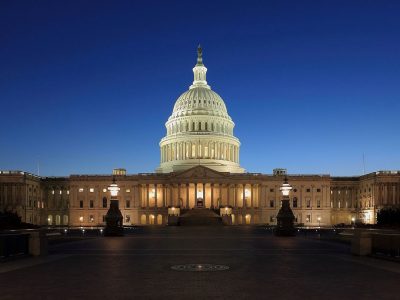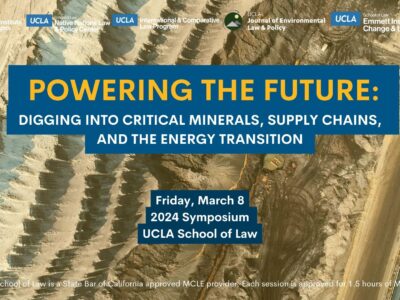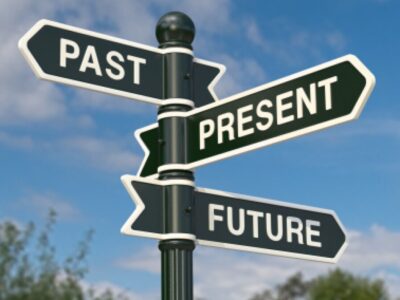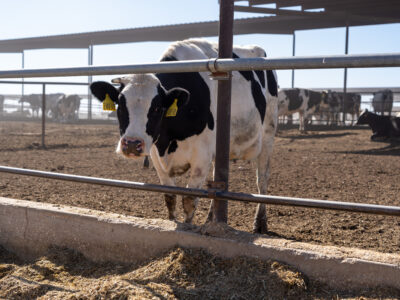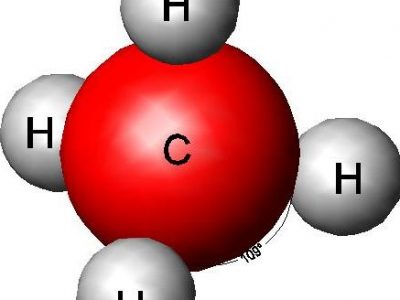Air Quality
The Ten Most Important U.S. Environmental Laws
Some of the choices may surprise you.
What are America’s most important environmental laws? Some are familiar, such as the federal air and water pollution laws, and the Endangered Species Act. But there are other people rarely hear about — even in environmental law courses — but have done a lot to protect the environment.
CONTINUE READINGCounting the Climate Costs of Warfare
There are calls for nations to disclose their military-related greenhouse gas emissions as researchers try to tally the climate impacts of war in Ukraine and Gaza.
What if I told you that nations around the world were ignoring a significant amount of their greenhouse gas emissions by omitting an entire dirty sector from their tally? Would you be horrified? Would you want to close that loophole so that parties to international agreements are required to report these hidden emissions as part …
Continue reading “Counting the Climate Costs of Warfare”
CONTINUE READINGCritical Insights on the Mineral Boom: Part II
A vision to ensure enforceable community benefits from mineral extraction: Insights from the Emmett Institute’s “Powering the Future” symposium.
“Voice, agency, and meaningful compensation.” Those are the things that California Tribal Affairs Secretary Christina Snider-Ashtari said must be granted in exchange to some communities bearing the brunt of the energy transition and the new mineral boom, as recounted in Part One of this series. All week, my colleagues and I are sharing summaries, outcomes, …
Continue reading “Critical Insights on the Mineral Boom: Part II”
CONTINUE READINGThe Problems with the SCOTUS ‘Good Neighbor’ Arguments
Guest contributors Megan Herzog and Sean Donahue write that last week’s argument in the case of EPA’s Good Neighbor Rule shows the perils of agency rulemaking cases on the Supreme Court’s shadow docket.
Megan M. Herzog (former Emmett/Frankel Fellow at UCLA School of Law 2012-2016) and Sean H. Donahue are partners at Donahue, Goldberg & Herzog, which represents the Environmental Defense Fund, a Respondent-Intervenor in the Good Neighbor Rule litigation. Last Wednesday, the Supreme Court did something it has done only three times in the last half-century—it heard …
Continue reading “The Problems with the SCOTUS ‘Good Neighbor’ Arguments”
CONTINUE READINGRecentering Environmental Law: A Thought Experiment
If we had understood then what we know now. . . .
In 1965, scientists sent LBJ a memo mentioning the risks of climate change. Imagine if history had been a little different. Suppose it had been this memo and a follow-up report, rather than Rachel Carson’s attack on pesticides, that sparked the environmental movement. How would environmental law look different and how might we be thinking about …
Continue reading “Recentering Environmental Law: A Thought Experiment”
CONTINUE READINGThe New Particulate Standard and the Courts
The tough new air quality standard is sure to be challenged in court. Winning the challenges will be tougher.
EPA has just issued a rule tightening the air quality standard for PM2.5 — the tiny particles most dangerous to health — from an annual average of 12 μg/m³ (micrograms per cubic meter) down to 9 μg/m³. EPA estimates that, by the time the rule goes into effect in 2032, it will avoid 4500 premature …
Continue reading “The New Particulate Standard and the Courts”
CONTINUE READINGInterstate Pollution and the Supreme Court’s “Shadow Docket”
The Court considers whether to stay an EPA plan in light of changed circumstances.
Later this month, the Supreme Court will hear oral argument about whether to stay a plan issued by EPA to limit upwind states from creating ozone pollution that impacts other states. As I wrote before the Court decided to hear the arguments, the issues here seem less than earthshaking, and for that matter, less than …
Continue reading “Interstate Pollution and the Supreme Court’s “Shadow Docket””
CONTINUE READING7 Reasons California Should Get Tougher on Methane from Dairies
California lawmakers should rethink the role of dairy digesters in the state’s dairy and livestock mitigation strategy.
Even though California aims to decrease the emissions of methane, dairy operations are rewarded for creating, and capturing, more and more of the planet-warming super pollutant in the form of manure-derived biogas. Today, California lawmakers declined to correct that perverse incentive, but they still have opportunities to rethink the state’s embrace of digesters as its …
Continue reading “7 Reasons California Should Get Tougher on Methane from Dairies”
CONTINUE READINGThe Unique Legal Context of EPA Methane Regulations
Three separate congressional actions intersect to support the regulations.
The government’s efforts to control methane have followed a complicated path, involving three different congressional actions: section 111 of the Clean Air Act, which allows EPA to regulate emissions of greenhouse gases; a congressional override of an earlier regulatory action; and a newer statute that creates a fee on methane emissions. The upshot is to …
Continue reading “The Unique Legal Context of EPA Methane Regulations”
CONTINUE READINGThe U.S. Supreme Court & Environmental Law in 2024
Numerous Key Environmental Issues and Doctrines Will Confront the Justices This Year
As we begin 2024, it’s useful to identify and assess the many environmental issues that the U.S. Supreme Court has agreed to decide this year. It seems likely that the conservative majority of the justices will erode or, perhaps, dramatically jettison longstanding principles of environmental law and policy in the coming months. Summarized below are …
Continue reading “The U.S. Supreme Court & Environmental Law in 2024”
CONTINUE READING



